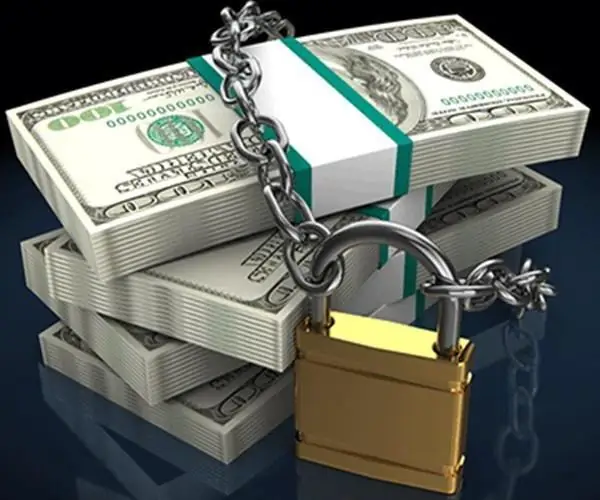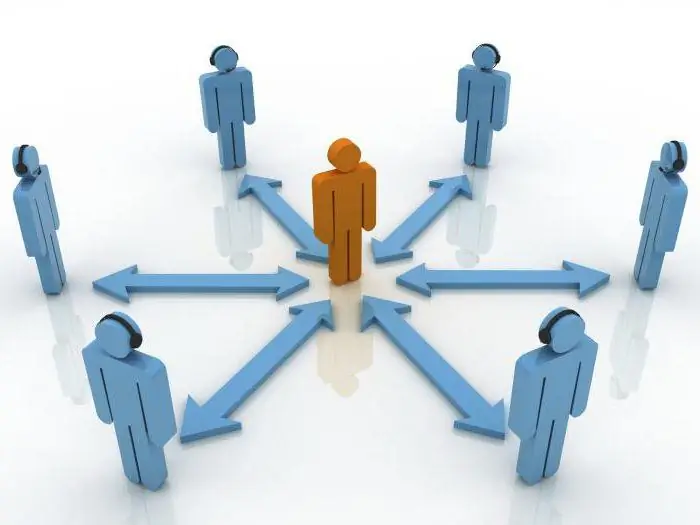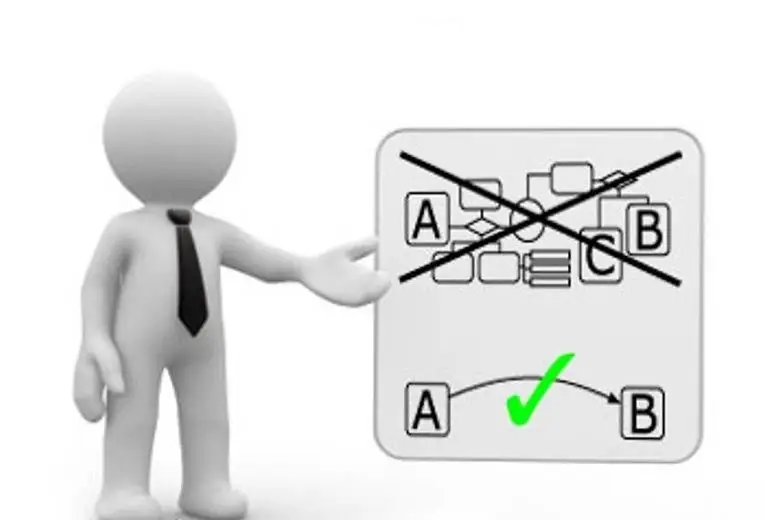2025 Author: Howard Calhoun | [email protected]. Last modified: 2025-01-24 13:10:26
Each leader performs the basic functions of management: planning, organization, motivation, control. The four elements of the control function: defining indicators and methods for measuring results, measuring results, determining whether results are on track, and corrective actions.
All management functions: planning, organization, motivation, control are closely interconnected. They are equally important for effective management. They cannot be divided into major and minor. At the same time, management functions: organization, motivation and control are based on thoughtful and effective planning.

- Planning is the primary, fundamental function. Based on the strategic goals, a plan is built to achieve them, providing for the allocation of certain resources and linking this allocation in time. Planning documents the allocation of resources and unites the efforts of individual departments and employees to achieve a common goal. For this, it is carried outdecomposition of common goals into personal ones. It is imperative to provide for planning and control of the organization. Management functions, in addition to goal setting, also provide for the compilation of a list of work that must be performed in a certain sequence to achieve the goal. At the same time, each work is tied to the time of its beginning and end, the resources assigned to it and subsequent (or previous) works in time.
- Organization, as a function of management, is to create a structure that allows individual elements of the system to work together according to given rules and rationally spend the allocated resources to achieve the goals. The organizational structure is described by a number of formalized rules - regulations, regulations, instructions.
- Motivation, as a function of management, is to encourage employees at all levels to work effectively together to achieve their goals. This is the most humanistic and least formalized function of governance.
- Control, as a function, the management process consists in quantitative and qualitative accounting of the results of work, this is a process that ensures the organization achieves its goals
Assignment of control
Control is the main function of management. It is for:
- Reducing the uncertainty of the production process and the management process.
- Prediction and failure prevention.
- Support successful action.
Control is unthinkable without measurement. To understand whatthe work is going according to plan, it is necessary to compare the quantitative indicators achieved at the time of control with some previously known planned ones.
Process control is a system that allows you to plan, measure, identify deviations and correct any business activity, such as production, packaging, delivery to the consumer, and more.
The control function in management is an essential part of the management process.
In the absence of a control function, any control loses its meaning. You will not know if what was planned was done, and in general, if anything is being done.
Without the control function, it is also impossible to manage personnel.
The management process is a functional process for organizational control, it should grow out of the goals and strategic plans of the organization
Four elements of the control function
There are four main steps in the management control function:
- Define indicators and how to measure results.
- Measure results.
- Determine if results are as planned.
- Apply corrective action.
"Control" means a list kept in duplicate (French contrôle, from contrerôle -, from Latin contra - against and rotulus - scroll).
Setting targets and methods for measuring results
It is necessary to form a set of indicators that are important for the controlled process and determine the planned values for each at given points in time. When at this time the actualAs a result, managers receive signals about how things are going and thus they do not need to check every step of the implementation of plans.

Indicators should be clearly articulated, measurable and material to monitor. In a manufacturing plant, metrics may include sales and output, labor efficiency, safety performance, and more.
In service delivery, on the other hand, metrics should include, for example, the number of customers who have to wait in line at the bank or the number of new customers brought in as a result of an updated advertising campaign.
Measurement points on the timeline should also not be chosen randomly, but should be associated with critically important, from the point of view of the controlled process, periods of time or the beginning / end of important stages of the process. It could be
- Beginning or end of the planning period - shift, day, week or month.
- Beginning or end of an important stage: completion of pre-production, start of final assembly of the product, shipment of the product to the customer.
- A new product release or achievement of planned service volumes.
The functions of planning and control in management are very closely interconnected and do not make sense one without the other. No one controlled plan turns into an empty piece of paper. The management functions of motivation and control are also related.
Measuring results
Measuring results at control points and comparing them with planned onesindicators should be carried out in a proactive manner so that deviations can be detected as early as possible or even predicted before they occur, thus avoiding or minimizing corrective action.

If checkpoints are properly planned and tools are available to determine exactly what subordinates are doing, assessing current and expected performance will be accurate and easy.
However, there are many activities in which it is difficult to determine the exact control points, there are also many activities that are difficult to measure.
It is quite simple, for example, to establish a standard time for the production of mass products and it is just as easy to measure the actual values for these indicators
The situation is more complicated with types of work far from technology. For example, it is not easy to monitor the work of an industrial relations manager, because it is not easy to develop a clear scorecard.
The head of this type of manager often relies on such vague indicators as union relations, the enthusiasm and loy alty of subordinates, employee turnover and/or labor disputes. In such cases, the results of measuring the subordinate by the manager are also vague.
Compliance of results with the plan
This is a simple but very important step in the control process. It involves comparing measured results with predetermined targets. At this stage, a pre-developed comparison technique is extremely important. In thatThe document should clearly define what is specifically measured, at what point in time and under what conditions. Follow this technique strictly, otherwise, the results of measurement and comparison with the plan will be unreliable.

If the performance is as planned, management may believe that everything is under control. In this case, there is no need to interfere with the day-to-day running of the organization.
Corrective action
This stage becomes the most important in the event that the indicators do not reach the planned ones and the analysis shows the need for corrective actions. Such corrective actions may include changes to one or more aspects of the day-to-day operation of the organization.

For example, a bank branch manager must decide that more cashiers in the hall need to be occupied in order to meet the previously set maximum five-minute wait.
Or the shop manager decides to send the machine operators overtime to meet the deadlines for the delivery of products.
Monitoring also helps to identify incorrectly set targets, in which case the corrective action will be to correct the targets, and not to fight to change the current measured values.
Timeliness of corrective action
You must always develop a constructive way to bring the indicators to the planned values, otherwise you will have to belatedly realize that the failure has already occurred. The earlier a bug or failure is identified, the more likely it is to fix or catch up. And the less time, material and labor resources will be spent on its correction.
Deviations discovered at a later date can be completely impossible to correct. In this case, the organization incurs significant financial and reputational losses, up to the termination of its operation.
Bad news today is better than the same news tomorrow.
D. S. Chadwick

Relationship of control functions
Management functions: motivation and control are closely related to each other. To build an effective motivation system for a subordinate, a manager needs access to accurate and timely control results.
Control can be carried out for compliance:
- planned indicators;
- quality standards;
- corporate policies;
- requirements for safety and labor protection;
- requirements of controlling state or public organizations.
Control can also be periodic and one-time, scheduled and emergency, private and as part of a general audit of the organization.

Conclusion
The main function of control in management is to ensure the implementation of the plan and thus achieve the goals of the organization. Additional features - support for organization and motivation and interaction with them. The control function in management is the most important. The point of control is notin order to convict the unit or employees of non-fulfillment of the plan and punish them. The point is to timely detect deviations from the plan. Then there is a chance to have time to take corrective actions. Thoughtful organization of control processes is the key to accurate and timely execution of plans and achievement of goals.
Recommended:
Leasing: advantages and disadvantages, main function, classification, tips and tricks

Definition, functions, advantages and disadvantages of leasing as a form of financial activity. General information, classification of leasing relations. Pros and cons of buying a car on lease, as the most common product. Recommendations for choosing a leasing company
Control function of taxes: description and examples

What are taxes? Characteristics and examples of their functions: control, social (redistributive), regulatory, fiscal. What sub-functions stand out here? What is the additional incentive function? What are the control and other functions of the Federal Tax Service?
Control of cash operations of the bank. Overview of cash transactions control systems

Since various kinds of fraud often occur in the field of cash register accounting, every year the control of cash transactions becomes more and more complicated, tougher and modernized. This article discusses the role of the cash desk in the enterprise, the rules of conduct, as well as methods and systems for monitoring operations
Control object, control subject - complementary concepts

In management there are two concepts such as the object of management, the subject of management. Each organization is represented by an association of two subsystems. One of them is leading, and the other is controlled. But in both cases, they represent relationships between people
Event management is the management of the organization of events. Event management and its development in Russia

Event management is a complex of all activities carried out to create mass and corporate events. At the same time, the former are called upon to provide powerful support to advertising companies, while the latter are aimed at strengthening the spirit within corporations

